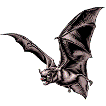Museum, University of Nebraska State

University of Nebraska State Museum: Mammalogy Papers
Document Type
Article
Date of this Version
4-4-2005
Citation
Mastozoología Neotropical (2005) 12(2): 153-179.
Abstract
Nicaragua’s Cosigüina Peninsula, located at the northwestern tip of the country, is one of the most poorly studied biotic regions in Central America. The peninsula has been occupied for millennia because the climate of the region supported human habitation and because of its strategic position along the rich Pacific coast. The combination of long-term occupancy by humans and the cataclysmic eruptions of Volcán Cosigüina have produced a heavily impacted landscape. During the 1960s, the University of Kansas conducted multiyear field surveys of the terrestrial mammals on the peninsula and the adjacent mainland to quantify species diversity, relationships, abundances, habitat use, and reproduction.
The mammalian fauna of the peninsula contains at least 39 species of terrestrial mammals, which includes 7 orders and 17 families. These include Didelphimorphia (2 species)— Didelphidae, 2; Chiroptera (22)—Emballonuridae, 2; Noctilionidae, 1; Mormoopidae, 1; Phyllostomidae, 12; Vespertilionidae, 3; Molossidae, 3; Carnivora (4)—Procyonidae, 1; Mustelidae, 1; Felidae, 2; Perissodactyla (1)—Tapiridae, 1; Artiodactyla (1)—Cervidae, 1; Rodentia (8)—Sciuridae, 1; Heteromyidae, 1; Muridae, 5; Dasyproctidae, 1; Lagomorpha (1)—Leporidae, 1. We provide new information on distributions, systematics, morphometrics, and natural history of the species of terrestrial mammals on the Cosigüina Peninsula, including a number of new records for the peninsula. We document that diversity and abundances of mammals can be substantial in a heavily impacted landscape. In comparison with five other mammalian faunas in Nicaragua, the Cosigüina fauna is most similar in size and diversity with those from elsewhere in the Pacific lowlands. The fauna from the Cordillera los Maribios, which is composed of the volcanic peaks along the eastern edge of the Pacific Lowlands, has the lowest number of species recorded for any of the six faunas with only 21 species recorded; however, this fauna may be under sampled or the unstable environments offered by these active volcanoes may not support a large or diverse mammalian fauna. The mammalian faunas from the remaining two physiographic regions of Nicaragua—Central Highlands and Atlantic Lowlands—have larger, more diverse faunas than that of the Cosigüina Peninsula and elsewhere in the Pacific lowlands. Three reserves in Nicaragua’s Sistema Nacional de Áreas Protegidas now protect more than one-fourth of the peninsula.
Included in
Biodiversity Commons, Other Ecology and Evolutionary Biology Commons, Terrestrial and Aquatic Ecology Commons, Zoology Commons


Comments
Copyright 2005, SAREM. Used by permission.